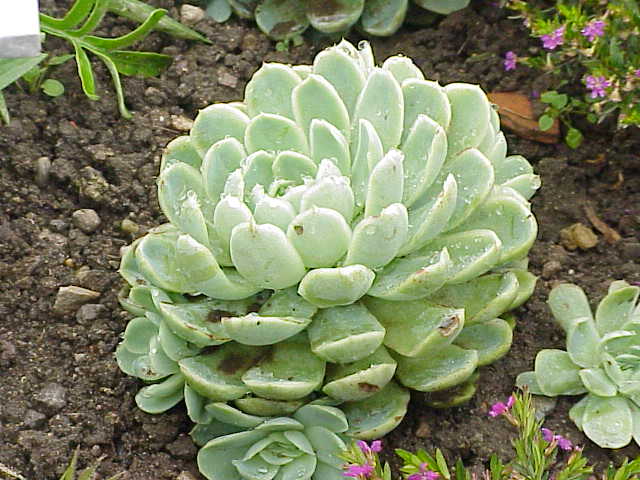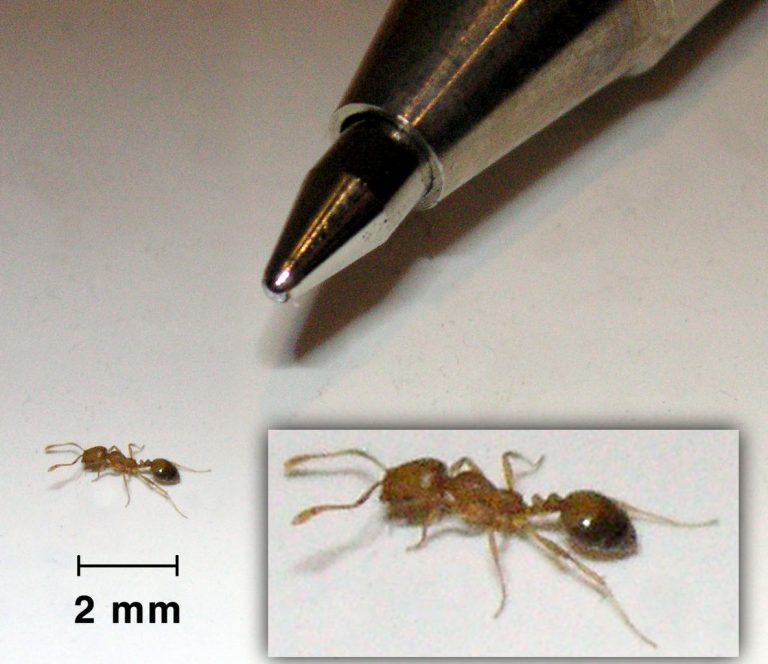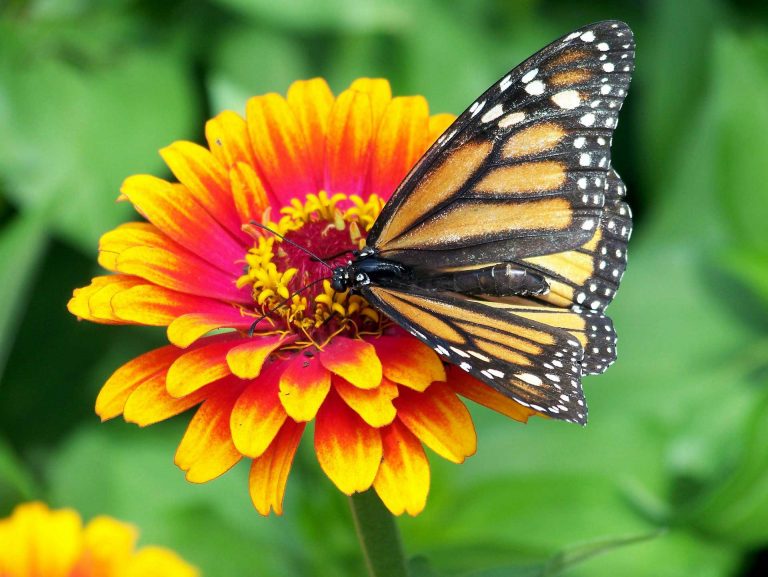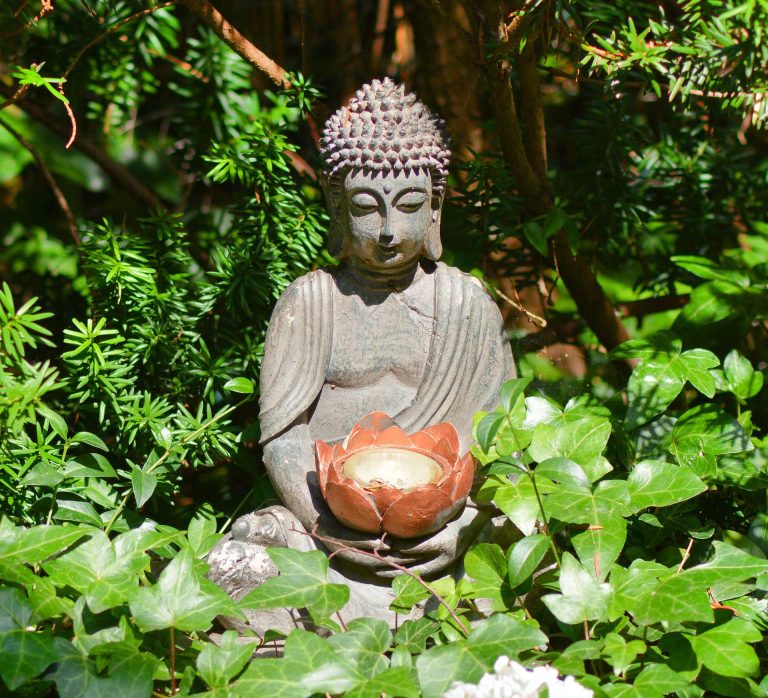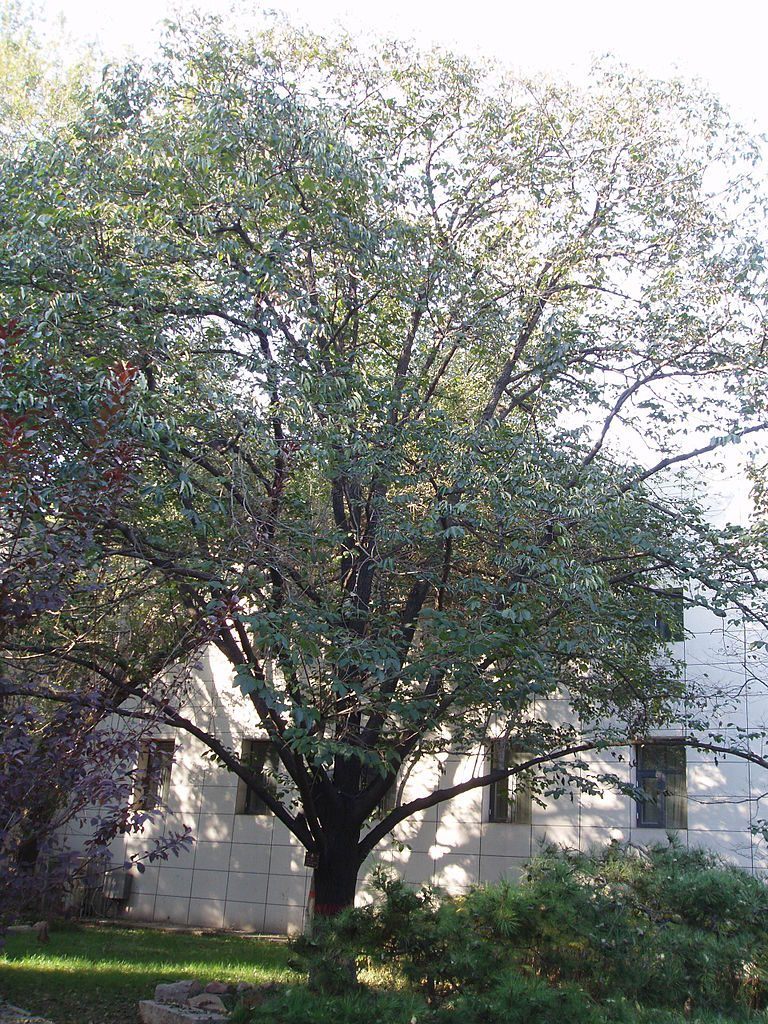Hens and Chicks
Scientific Classification
| Kingdom: | Plantae |
| (Unranked): | Angiosperms |
| (Unranked): | Eudicots |
| (Unranked): | Core eudicots |
| Order: | Saxifragales |
| Family: | Crassulaceae |
| Subfamily: | Sedoideae |
| Tribe: | Sedeae |
| Subtribe: | Sedinae |
| Genus: | Echeveria |
The Echeveria Elegans, commonly known as a Mexican snow ball, White Mexican rose or Mexican gem is a member of the Crassulaceae family. This flowering plant species are endemic to the semi-desert regions of Mexico. These succulent plants are very beautiful and grow fast. They love partial to full sun and thrive well in such conditions. Like the other species of this genus, the Echeveria Elegans produces many offsets, which are usually separated from the parent plant and grown separately in the period of spring; hence such plants are commonly called as ‘hens and chicks”. These offsets produced by the parent plant cover the ground densely to a height of 8 inches and spread in a 12 inch area.
Description
The Echeveria Elegans is an evergreen perennial succulent plant that grows from5 to 10 cm in length and around 50cm in width. The spoon shaped cluster forming rosettes are tight and often seen with greenish-blue colored leaves. The leaves are fleshy and bear slender and long pink flowers or stalks of 25cm length, with a yellow tip, often seen in spring or winter. Such a lovely plant is obviously planted for ornamental purpose, especially in the rock gardens or in a pot.
Habitat
The Echeveria Elegans can be found in habitats having a subtropical climate like in Southern California. This plant has gained a Royal Horticultural Society’s Award of Garden Merit for thriving under the glass, provided with sufficient heat in a region having a temperate climate. Usually, it cannot tolerate the temperature of the temperate regions, which goes below 7 degree C. Thus, if you stay in a region experiencing freezing temperatures, you can also cultivate this plant by bringing them indoors or keeping them in glass.
How to Grow at Home
Light
In their native growing place, Echeveria prefers full sun. However, you should try to avoid two important things; the first is the drastic change in the sunlight, and the next is the hot summer sunlight in the peak hours of the afternoon. The plants get stressed out, if they are under the sunlight that keeps on dramatically changing its intensity. If you want to place your plant outdoors after the end of the freezing climate, opt to do so in the spring, and introduce them in the sunlight very gradually, like a few hours in the morning sun, then again a few hours more, until they can adjust to the full sun. The peak hours in the afternoon that have intense sunlight can burn the leaves of this plant; hence avoid direct sunlight during those peak hours. Burned leaves are difficult to heal, and usually these plants have their leaves attached for a long time. So you will have to keep the plant with the burned leaves for a long period of time, or else you will have to prune it. If the plant underwent severe damage, then you will have to cut off the plant head, and allow it to regrow from the plant’s stalks. During the cold season, take them indoors and place them near the window that receives most of the sunlight. There is a possibility of stretching these plants if they did not get adequate sunlight. Hence, prefer a window facing towards the south or any other bright widow to place them.
Water
The Echeveria Elegans plant prefers to be in a medium watered soil, which means neither too wet, neither too dry. Whether grown indoors or outdoors, they require water more than the myth that most people think about the water requirements of such cactus succulent plants. If placed in a dry temperature inside the house, everything along with the soil will dry up, and this will wither the roots of the plants. So take care to prevent the soil from extreme drying off. While watering, pour water to the soil, instead of pouring to the plant’s rosettes. Pour the water in the soil until the whole water drains out from the plant’s bottom. This process should be repeated a couple of times. The next watering should be done only after the complete drying of the soil. Make sure the soil is not soggy, for which you will have to remove the water filled saucer from beneath the pot. Under watering and over watering can cause several problems to these plants. Some of the problems are dropping leaves, wilting and shriveling.
Soil
Similar to the behavior of the other succulents, the Echeveria Elegans prefers a soil that has good drainage capacity. This will also prevent the root of the plant from getting rot disease. The expert gardeners develop their own potting mix that contains Perlite and soil. You can also get a good potting mix or cactus soil mix from the markets, which are well suited for these plants. The soil requirements for the succulent plants always consist of a word, ‘sandy’, which means the soil should drain well. Adding sand to the soil turns it into coarse grained soil, which helps to block the air pockets present in the soil.
Fertilizer
These succulent cactus plants do not require a continuous supply of fertilizers. These plants are hardy and grow even in poor soil with less nutrients, although, occasional fertilizing can be beneficial. At the beginning of the spring, you can make use of a slow-release fertilizer or a liquid fertilizer. But you will have to dilute the fertilizer in a double or multiple proportions than recommended. The number of times of usage and quantity should also be less than the suggestions on the label. You can also use a low dose nitrogen mix or a fertilizer suitable for cactus plants.
Containers
The suitable container for an Echeveria Elegans should be sufficient enough to place the root balls of this plant. Some gardeners mistakenly keep them in a large pot. The large pot can be a problem for this small plant. Large pots can accommodate huge quantity of soil. After watering the soil, it can retain more water quantity than a small pot soil. More moist content can damage the roots of the plants. Hence, provide a medium sized clay pot for these species.
How to Propagate
You should cut off the offsets produced by the parent Echeveria Elegance and place in another pot with good potting mix. It can also be propagated by leaf cutting. The perfect time to carry out the leaf cutting propagation is during the summer or spring. Keep the leaves for drying at least for 24 hours till the sap flowing from it, stops. Then place the cut end of the leaf into a moist and nutritious potting mix. Water moderately, and wait till the soil dries out for the next watering. This plant can also be propagated by using ripe seeds, stems and roots.
Pests and Diseases
These plants are usually harmed by vine weevils, mealy bugs and aphids. Suitable pest control can be used to get rid of these pests. This plant has not yet been recorded as having been affected by any disease.

Having discovered a fondness for insects while pursuing her degree in Biology, Randi Jones was quite bugged to know that people usually dismissed these little creatures as “creepy-crawlies”.

